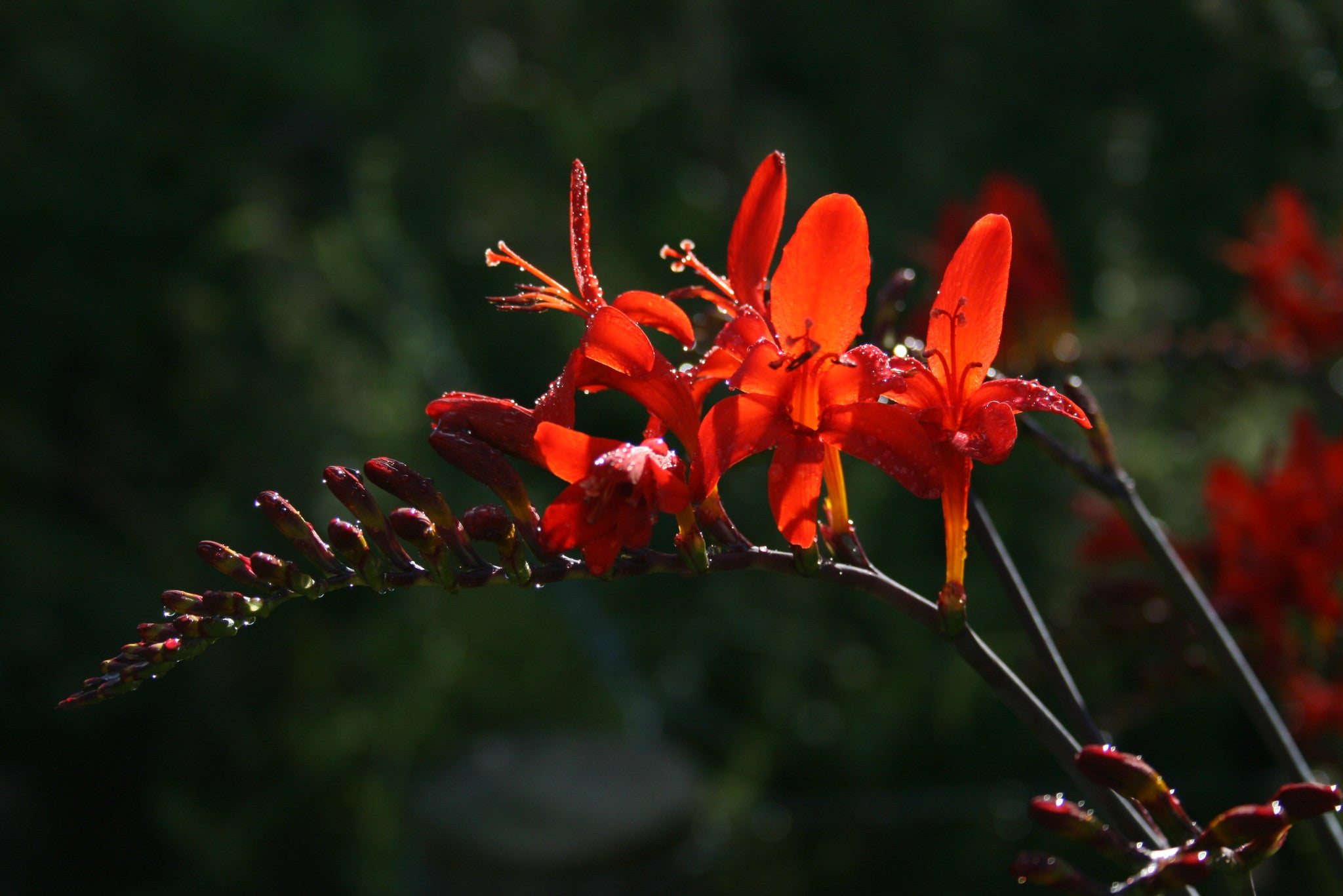Crocosmia 'Lucifer'
Approx. 0.5 litre pot
About this cultivar:
Crocosmia 'Lucifer' is a famous Crocosmia and was the first bred by Alan Bloom in the 1960s. It flowers bright red from early July and the bright-green pleated foliage is excellent. Val Bourne says it is "excellent with Helenium ‘Sahin’s Early Flowerer’". Monty Don says "Few flowers summon the spirit of high summer so blazingly as Crocosmia 'Lucifer', with its arching sprays of irresistible red. It is a joyous, dramatic star in any garden. "
Most of our Crocosmias are slow growing. Not this one. Anyone I've met who knows what they are talking about says "A weed".So we don't really like it. But we have it in many places in our garden - hedges banks etc. So maybe we do like it.....
What do I say? I say "Love it or hate it -It grows quite tall and vigorously: be careful or it will take over your garden!"
- Position: Full sun, partial shade
- Soil: Almost any soil, grows well in Ballyrobert
- Flowers: July, August
- Other features: Grows well in Ballyrobert, Royal Horticultural Society Award of Garden Merit (RHS AGM)
- Hardiness: Fully hardy - grows well in Ballyrobert!
- Habit: Clump forming
- Foliage: Deciduous
- Height: 90 - 150 cm (3 - 5 ft)
- Spread: 90 - 150 cm (3 - 3 ft)
- Time to full growth: 2 to 5 years
- Plant type: Herbaceous Perennial, bulb
- Colour: Green, red
- Goes well with: Ilex (Holly), grasses (such Stipa), Lavendula, Anemone, Rudbeckia, Agapanthus, and Aster. If in doubt: front of a border.
About this genus:
Crocosmia is a wonderful genus of 11 species of easy-to-grow, perennial, summer flowering bulbs from Southern Africa. These iris family members (Iridaceae) produce blazing flower stalks in summer from fast-multiplying underground corms (bulb-like structures).
The common name Montbretia commemorates Antoine Francois Ernest Conquebert de Monbret, a botanist who accompanied Napoleon on his Egyptian campaign from 1798-1801. The genus name Crocosmia is derived from the Greek "krokos" (for saffron) and "osme" (for smell) as the dried leaves smell like saffron when crushed. Crocosmia flowers also attract butterflies and more importantly hoverflies...imporant predators of aphids and other garden pests.
Crocosmia species were first hybridized in the 1870's at the Lemoine nursery in France, and over 400 cultivars have been introduced. However many of the fine old cultivars have sadly been lost to history. The cultivars we have at Ballyrobert vary a bit in habit - some, like the aptly named 'Lucifer', can very vigorous and can take over the garden (if that's what you want) others, like the aptly named Lady Hamilton, are well behaved. As for soil and situation, we find they grow anywhere that isn't too extreme - if you have a very devilish spot in your garden, stick 'Lucifer' in there (pun intended).
Crocosmia flowers are often 'hot' colours; deeply saturated with red, orange, and yellow hues. Colour therefore often dominates thinking when considering plant pairings. In our garden at Ballyrobert we have paired them with Ilex (Holly), grasses (such Stipa), Lavendula, Anemone, Rudbeckia, Agapanthus, and Aster; just take a look at our photos for each cultivar. If in doubt stick in the front of a border!














